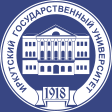List of issues > Series «Biology. Ecology». 2024. Vol 50
Early Summer Zooplankton of the Southern Basin of Lake
Baikal
For the Southern Basin of Baikal in the early summer (second half of July) period of 2023, the species composition of zooplankton, taxonomic structure, abundance, biomass of rotifers and crustaceans were determined. This time of transition from the subglacial period to the open water period is of great interest in studying the zooplankton of Lake Baikal. The studies revealed 22 species, including 4 species of crustaceans and 18 species of rotifers. The maximum zooplankton abundance was observed off the western coast, while the minimum values were recorded in the pelagial area. The structure of the dominant core of zooplankton in terms of numbers consisted of two species of crustaceans – Episсhura baikalensis, Cyclops kolensis, and three species of rotifers – Notholca intermedia, Synchaeta rufina, Keratella cochlearis. At the same time, E. baikalensis (mainly its naupliar stages) was included in the dominant core at all stations of the basin. The main factor that influenced the heterogeneity of zooplankton distribution was the temperature regime of the lake; in the coastal zone, this was complemented by the morphometry of the reservoir and the influence of the inflowing rivers. Water temperature in the littoral during the study period at the eastern shore was higher than at the western shore. The South Baikal Basin has a special specificity: a wide shelf zone on the eastern shore and almost complete absence of it on the western shore. The enrichment of the Baikal fauna by tributaries flowing along the eastern shore is also important. For example, the diversity of rotifers in plankton is higher off the east coast than off the west coast and in the pelagics. The water quality in the pelagic and coastal zones was assessed using the bioindication method. The minimum values of the saprobic index (0,4-0,7) are associated with the dominance of Baikal endemics. Water quality in the pelagic zone corresponded to class 1 called “purity”.
Sheveleva Natalya Georgievna, Candidate of Science (Biology), Senior Research Scientist, Limnological Institute SB RAS, 3, Ulan-Batorskaya st., Irkutsk, 664033, Russian Federation, e-mail: shevn@lin.irk.ru
Penkova Olga Geronimovna, Candidate of Science (Biology), Associate Professor, Irkutsk State University, 1, K. Marx st., Irkutsk, 664003, Russian Federation, e-mail: olg-penkova@yandex.ru
Misharina Evgenya Aleksandrovna, Candidate of Science (Biology), Associate Professor, Irkutsk State University, 1, K. Marx st., Irkutsk, 664003, Russian Federation, e-mail: me603@mail.ru
Afanas'eva E.L. Pribrezhnyi zooplankton otkrytoi zony Baikala [Coastal Zooplankton of the Open Zone of Lake Baikal]. Hydrobiol. J., 1975, vol. 11, no. 3, pp. 26-31. (in Russian)
Afanas'eva E.L. Biologiya baikal'skoi epishury [Biology of Episсhura baikalensis]. Novosibirsk, Nauka Publ., 1977, 143 p. (in Russian)
Korovchinskii N.M., Kotov A.A., Sinev A.Yu., Neretina A.N., Garibyan P.G. Vetvistousye rakoobraznye (Srustacea: Cladocera) Severnoi Evrazii. T. II. Sistematicheskaya chast' [Cladocera (Crustacea: Cladocera) of Northern Eurasia. Vol. II. Systematic part]. Moscow, KMK Publ., 2021, 544 p. (in Russian)
Kozhova O.M., Mel'nik N.G. Instruktsiya po obrabotke prob planktona schetnym metodom [Instructions for processing plankton samples using the counting method]. Irkutsk, Irkutsk St. Univ. Publ., 1978, 52 p. (in Russian)
Kutikova L.A. Kolovratki fauny SSSR (Rotatoria) [Rotifers of the USSR fauna (Rotatoria)]. St.-Petersb., Nauka Publ., 1970, 744 p. (in Russian)
Lazareva V.I., Lebedeva I.M., Ovchinnikova N.K. Izmeneniya v soobshchestve zooplanktona Rybinskogo vodokhranilishcha za 40 let [Changes in the Zooplankton Community of the Rybinsk Reservoir over 40 years]. Biologiya vnutrennikh vod [Inland Water Biology]. 2001, vol. 4, pp. 46-58. (in Russian)
Mazepova G.L. Tsiklopy ozera Baikal [Cyclopes of Lake Baikal]. Novosibirsk, Nauka Publ., 1978, 144 p. (in Russian)
Pislegina E.V. Zavisimost pelagicheskogo zooplanktona ot temperatury vody v Yuzhnom Baikale [Dependence of pelagic zooplankton on water temperature in South Baikal]. Fundamentalnye problemy izucheniya i ispolzovaniya vody i vodnykh resursov. Materialy nauchnoi konferentsii [Fundamental Problems of Studying and Using Water and Water Resources: Proс. Scien. Conf., Irkutsk, Russia]. Irkutsk, Inst. Geogr. Publ., 2005. pp. 426-428. (in Russian)
Bondarenko N.A., Tomberg I.V., Penkova O.G., Sheveleva N.G. Strukturnye perestroiki fito- i zooplanktona pod vozdeistviem klimaticheskikh izmenenii i antropogennoi nagruzki na primere proliva Maloe More ozera Baikal [Structural changes in phyto- and zooplankton under the influence of climate change and anthropogenic load on the example of the Maloe More Strait of Lake Baikal]. Inland Water Biology, 2023, vol. 6, pp. 727-739. https://doi.org/10.31857/S0320965223060050 (in Russian)
Sládeček V., Zelinka M., Rothschein J., Moravcova V. Biological analysis of surface waters. Vyd. Uradu pro Normalizaci a Mereni. Praha, 1981, pp. 186.
Ejsmont-Karabin J. Empirical equations for biomass calculation of planktonic rotifer. Pol. Arch. Hydrobiol. 1998, vol. 4, pp. 513–522.
Naumova E.Yu., Troitskaya E.S., Zaidykov I.Ya. Changes in the composition of the spring zooplankton of Lake Baikal. Limnology and Freshwater Biology. 2020, vol. 4, pp. 733-734. https://doi.org/10.31951/2658-3518-2020-A-4-733
Naumova E.Yu., Zaidykov I.Yu. Spring zooplankton of pelagial of the Baikal Lake. Hydrobiol. J., 2018, vol. 54, no. 1, pp. 33-39. https://doi.org/10.1615/HydrobJ.v54.i1.30
Kravtsova L., Vorobyeva S., Naumova E., Izhboldina L., Mincheva E., Potemkina T., Pomazkina G., Rodionova E., Onishchuk N., Sakirko M., Nebesnykh I., Khanaev I. Response of aquatic organisms communities to global climate changes and anthropogenic impact: evidence from Listvennichny Bay of Lake Baikal. Biology, 2021, vol. 10, pp. 904. https://doi.org/10.3390/biology10090904
Sládeček V. Rotifers as indicators of water quality. Hydrobiologia, 1983, vol. 100, pp. 169-200.
Sheveleva N.G., Penkova O.G. On long-term dynamics of spring zooplankton of open part of the Maloye More strait (the Baikal lake). Hydrobiol. J., 2016, vol. 52, no. 6, pp. 25-32. https://doi.org/10.1615/HydrobJ.v52.i6.30
